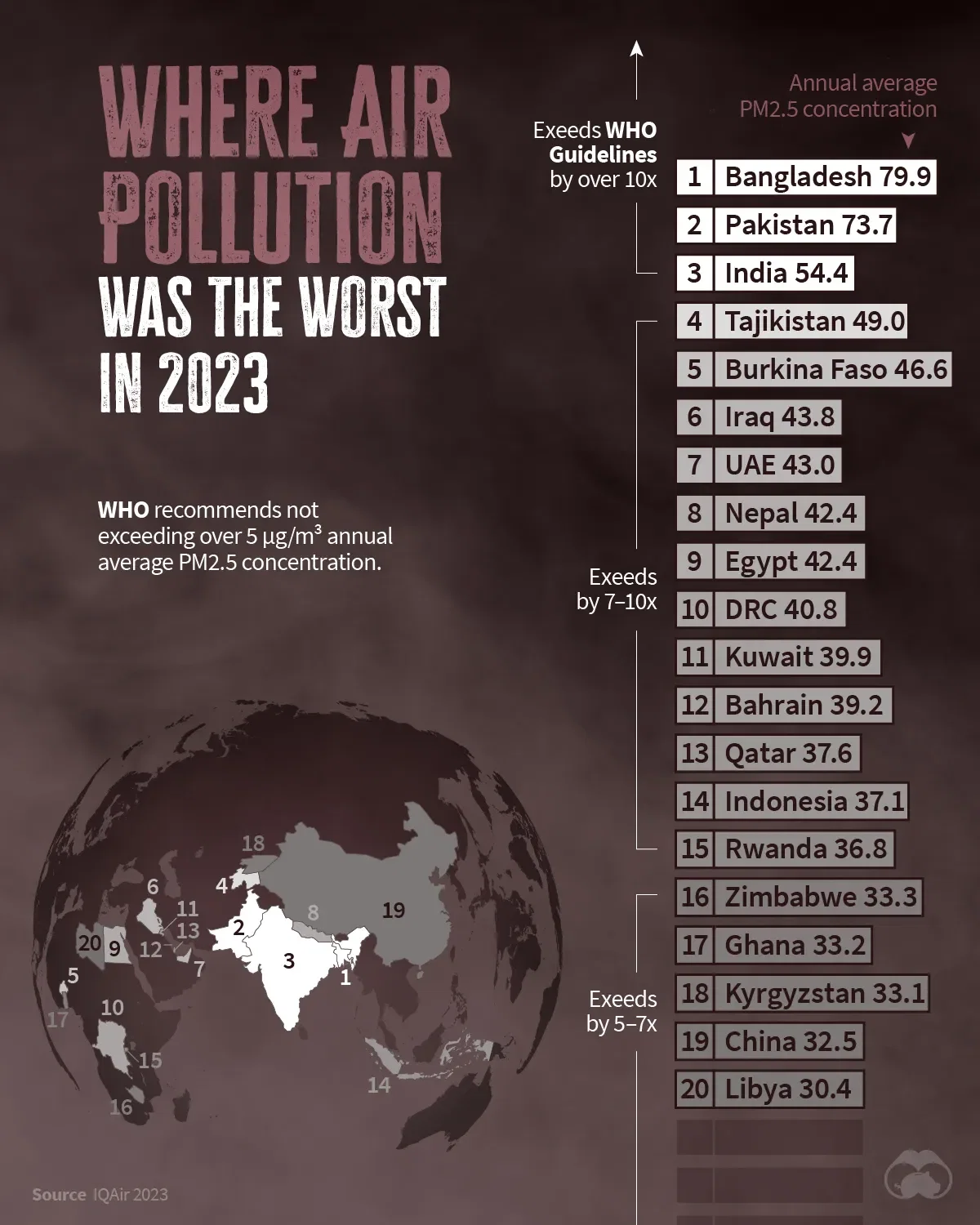Where Data Tells the Story
© Voronoi 2026. All rights reserved.

The world’s most polluted countries according to IQAir, ranked by their annual average PM2.5 concentration (μg/m³) in 2023.
Note: μg/m³ refers to micrograms per cubic mete
PM2.5 refers to fine particulate matter, with a diameter of 2.5 micrometers or less, that can travel deep into your lungs and cause health problems.
In 2021, the World Health Organization (WHO) updated its air quality guidelines for PM2.5. The recommended annual average level for PM2.5 is now 5 μg/m³, down from the previous target of 10 μg/m³.
Common sources of PM2.5 pollution include engine exhaust, power plant combustion, smoke from fires, and dust/dirt.
Research published in 2022 from the Air Quality Life Index (AQLI) found that 97.3% of the world’s population is exposed to levels of PM2.5 that exceed the WHO guidelines.
This takes 2.2 years off the global average life expectancy, relative to a world that met the WHO guideline. In South Asia specifically, the AQLI believes residents could be losing up to 5 years off their lives.